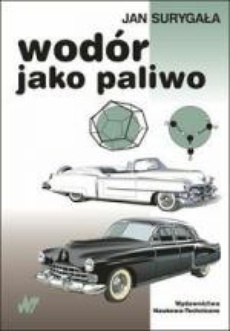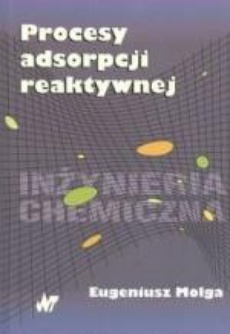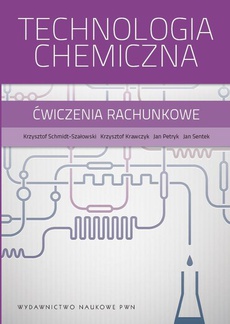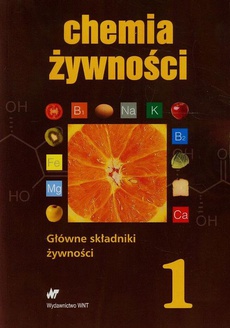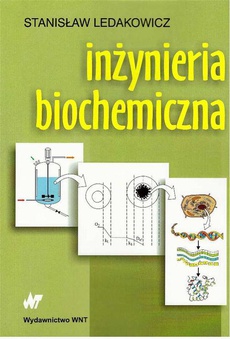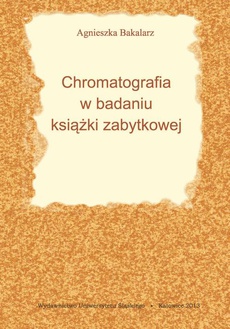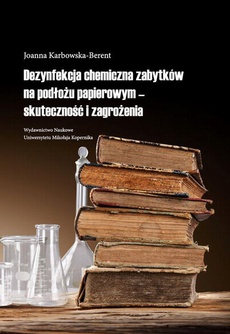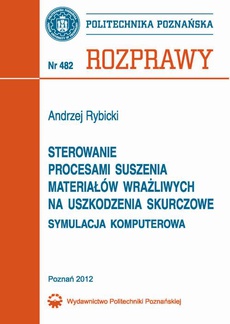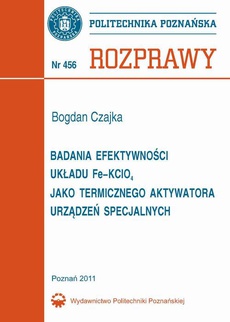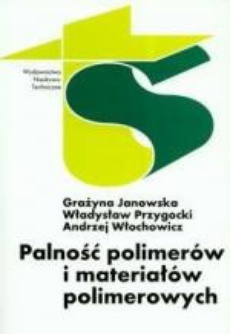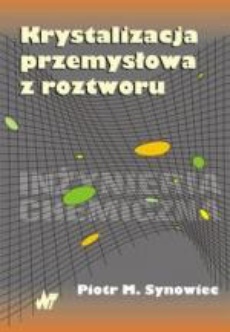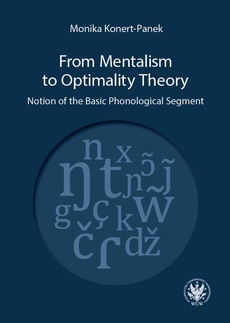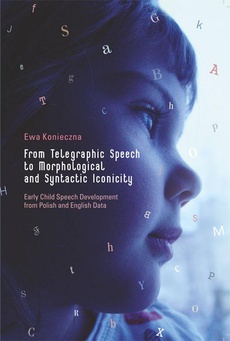POLECAMY
Vibrational Spectroscopy: From Theory to Applications
Redakcja:
Wydawca:
Format:
epub, mobi, ibuk
Compendium of IR and Raman spectroscopy!
Vibrational spectroscopy is one of the fundamental tool widely employed in the physico-chemical, material, natural, medical and pharmacological sciences.
The book describes basic techniques of Fourier-Transform Infrared (FTIR) and Raman scattering spectroscopies. The textbook is complemented by an extensive set of experiments which can be conducted by broadly available as well as advanced instrumentation.
After discussion of present theoretical approaches, instrumentation, data handling that explain the phenomenon of vibrational spectroscopy, the book reports new and exciting experiments and applications of the many fascinating spectroscopic effects. They can serve as a basis of several laboratory courses in the field of optical spectroscopy, physical chemistry as well as in specialised panels of medical chemistry, materials science and analytics in the broadest sense. Each exercise is preceded by a description of fundamentals required to understand a research problem. Lab practicals illustrate the application of the given vibrational spectroscopy technique as well as provide a detailed method to solve research problems, which can be introduced to a research, industrial and quality control laboratories.
The authors of the book are specialists in the field of infrared and Raman spectroscopy, for years introducing new courses for a wide panel of the educational offer and conducting research using vibrational spectroscopy.
The manual is designed for students of chemistry, environmental protection, biophysics, medical and life sciences universities. Undoubtedly it will be also helpful in analytical laboratories.
| Rok wydania | 2016 |
|---|---|
| Liczba stron | 236 |
| Kategoria | Inne |
| Wydawca | Wydawnictwo Naukowe PWN |
| ISBN-13 | 978-83-01-18893-1 |
| Numer wydania | 1 |
| Język publikacji | polski |
| Informacja o sprzedawcy | ePWN sp. z o.o. |
Ciekawe propozycje
Spis treści
| 1. Fundamentals of infrared spectroscopy (FT-IR) (Kamilla Malek, Emilia Staniszewska-Ślęzak, Kamila Kochan, Katarzyna Majzner) | 11 |
| 1.1. Quantum description – models of the harmonic and anharmonic oscillators... | 12 |
| 1.2. Normal coordinates | 13 |
| 1.3. Construction of a FT-IR spectrometer | 15 |
| 1.3.1. Light source | 15 |
| 1.3.2. Interferometer | 16 |
| 1.3.3. Sample chamber | 17 |
| 1.3.4. Detector | 17 |
| 2. Fundamentals of Raman scattering spectroscopy (Kamilla Malek, Małgorzata Barańska, Kamila Kochan) | 19 |
| 2.1. Quantum description of Raman scattering | 20 |
| 2.2. Instrumentation in Raman spectroscopy | 22 |
| 2.2.1. Laser | 23 |
| 2.2.2. Sample compartment | 23 |
| 2.2.3. Optical element splitting the beam of electromagnetic radiation | 24 |
| 2.2.4. Detector | 25 |
| 3. Special ft -ir techniques | 26 |
| 3.1. Sampling techniques in ft -ir spectroscopy (Paweł Miśkowiec) | 26 |
| 3.1.1. Transmission technique | 26 |
| 3.1.2. Reflexive techniques | 27 |
| 3.1.2.1. Attenuated total reflection, ATR | 28 |
| 3.1.2.2. Diffuse reflection in the mid-infrared range, DRIFT | 30 |
| 3.1.2.3. Reflection – absorption infrared spectroscopy, IRRAS | 32 |
| 3.1.3. Photoacoustic spectroscopy, PAS | 34 |
| 3.1.4. Infrared emission spectroscopy, ES (IRES) | 35 |
| 3.2. FT-IR microscopy and imaging (Ewelina Wiercigroch, Kamilla Malek) | 36 |
| 3.3. Vibrational circular dichroism (Piotr F. J. Lipiński) | 40 |
| 3.3.1. Chirality | 40 |
| 3.3.2. What is Vibrational Circular Dichroism? | 40 |
| 3.3.3. How is VCD measured? | 41 |
| 3.3.4. Applications of VCD spectroscopy | 42 |
| 3.3.5. Calculations of VCD spectra and their problems | 43 |
| 3.3.6. Very short summary of current developments | 44 |
| 4. Special Raman techniques | 46 |
| 4.1. Resonance Raman scattering spectroscopy (Katarzyna M. Marzec, Jakub Dybaś) | 46 |
| 4.1.1. Resonance versus normal Raman scattering and fluorescence | 46 |
| 4.1.2. Phenomenon of resonance Raman scattering | 47 |
| 4.1.3. Application and potential of RRS | 49 |
| 4.1.4. Instrumentation | 50 |
| 4.2. Surface-enhanced Raman scattering spectroscopy (SERS) (Agata Królikowska, Jolanta Bukowska) | 52 |
| 4.2.1 Mechanism of surface enhancement | 53 |
| 4.2.2 Types of the substrates used in SERS spectroscopy | 55 |
| 4.2.3. SERS spectral features | 56 |
| 4.2.4. Applications of SERS spectroscopy | 57 |
| 4.3. Raman optical activity (ROA) (Joanna E. Rode) | 57 |
| 4.3.1. Schematic diagram of ROA phenomenon | 58 |
| 4.3.2. Theoretical description of ROA phenomenon | 59 |
| 4.3.3. Instrumentation | 61 |
| 4.3.4. Applications of ROA | 63 |
| 4.3.5 Summary | 64 |
| 4.4. Raman imaging (Agnieszka Kaczor) | 67 |
| 5. Chemometric analysis of FT-IR and Raman spectra (Katarzyna Majzner, Kamila Kochan, Małgorzata Barańska) | 74 |
| 5.1. Analysis of marker bands | 74 |
| 5.2. Cluster analysis (CA) | 76 |
| 5.2.1. Hierarchical cluster analysis (HCA) | 77 |
| 5.2.2. Non-hierarchical cluster analysis | 81 |
| 5.2.3. Comparison of HCA, KMCA and FCA methods | 83 |
| 6. Selected applications of ft -ir spectroscopy | 85 |
| 6.1. An effect of molecular symmetry and isotopic substitution on ir and Raman spectra of chloromethane derivatives (Kamilla Malek, Katarzyna M. Marzec) | 85 |
| 6.2. Peak-fitting process by an example of atr ft -ir spectra of soft tissues (Marlena Gąsior-Głogowska, Adam Oleszko) | 89 |
| 6.2.1. Skin | 89 |
| 6.2.2. Skin’s proteins | 90 |
| 6.2.3. Infrared spectroscopy of tissues | 90 |
| 6.3. Synthesis and spectral characteristics of hydroxyapatites (Marlena Gąsior-Głogowska, Adam Oleszko) | 96 |
| 6.3.1. Hydroxyapatites | 96 |
| 6.3.2. Infrared spectroscopy of hydroxyapatite | 97 |
| 6.4. The application of infrared spectroscopy for the determination of petroleum hydrocarbons in surface water and wastewater (Paweł Miśkowiec) | 100 |
| 6.4.1. The composition of crude oil; environment pollution with petroleum products | 101 |
| 6.4.2. The toxic properties of the components of crude oil | 102 |
| 6.4.3. Legislation concerning problems of environmental pollution with petroleum products and methods of its measurement | 103 |
| 6.4.4. An application of IR spectroscopy in analytical chemistry | 104 |
| 6.4.5. Nernst distribution law | 105 |
| 6.5. Determination of absolute configuration using vibrational circular dichroism (Piotr F. J. Lipiński) | 108 |
| 6.5.1. Determination of absolute configuration via VCD | 108 |
| 6.6. The identification of painting materials and degradation products. FT-IR imaging of paint layers (Emilia Staniszewska-Ślęzak, Kamilla Malek) | 113 |
| 6.6.1. Chemical characteristics of a paint layer and products of its degradation | 113 |
| 6.6.2. FT-IR spectroscopy as a technique used in the identification of chemical composition of artworks | 116 |
| 6.7. Structural analysis of proteins by means of FT-IR spectroscopy (Katarzyna Majzner) | 119 |
| 6.7.1. Anatomy of proteins | 119 |
| 6.7.2. Application of FT-IR spectroscopy to studying proteins | 121 |
| 6.8. Structural analysis of lipids by using infrared spectroscopy (Tomasz P. Wróbel) | 126 |
| 6.8.1. Characteristics and occurrence of lipids | 126 |
| 6.8.2. Application of FT-IR spectroscopy to studying lipids | 127 |
| 6.9. Structural analysis of carbohydrates by means of ft -ir spectroscopy (Kamilla Malek, Ewelina Wiercigroch) | 130 |
| 6.9.1. Molecular structure of carbohydrates | 130 |
| 6.9.2. Characteristic IR bands of carbohydrates | 133 |
| 6.10. An analysis of atr ft -ir spectra of animal tissues (Emilia Staniszewska-Ślęzak, Kamilla Malek) | 135 |
| 6.10.1. Biochemical features of selected animal tissues | 135 |
| 6.10.2. FT-IR spectra of animal tissues | 136 |
| 6.11. Diagnostics of disease development by ft -ir imaging of tissue (Kamila Kochan, Małgorzata Barańska) | 141 |
| 7. Selected applications of Raman spectroscopy | 145 |
| 7.1. The identification of proteins secondary structure in Raman spectra (Anna Rygula) | 145 |
| 7.1.1. Characteristics of protein in Raman spectrum | 145 |
| 7.1.2. Marker bands of amino acid residues | 146 |
| 7.1.3. Other techniques of Raman spectroscopy for the analysis of proteins | 148 |
| 7.2. Raman analysis of fatty acids (Aleksandra Jaworska, Małgorzata Barańska) | 150 |
| 7.2.1. Occurrence and characteristics of fatty acids | 150 |
| 7.2.2. An application of Raman spectroscopy in an analysis of fatty acids | 152 |
| 7.3. Raman spectroscopy as a method to analyze lipids in animal tissues and mixtures (Krzysztof Czamara, Agnieszka Kaczor) | 155 |
| 7.3.1. Classification of lipids | 155 |
| 7.3.2. Spectroscopic characteristics of lipids | 157 |
| 7.4. Polymorphism of model triacylgliceroles (Marta Z. Pacia, Krzysztof Czamara, Agnieszka Kaczor) | 161 |
| 7.4.1. Polymorphism of lipids | 161 |
| 7.4.2. Spectroscopic characteristics of TAGs polymorphs | 162 |
| 7.5. Identification of carotenoids in plants by means of Raman spectroscopy (Aleksandra Jaworska, Małgorzata Barańska) | 166 |
| 7.5.1. Structure, functions and occurrence of carotenoids | 166 |
| 7.5.2. Raman bands of carotenoids | 167 |
| 7.6. Identification of terpenes in citrus oils by means of Raman spectroscopy (Aleksandra Jaworska, Małgorzata Barańska, Kamilla Malek) | 170 |
| 7.6.1. Essential oils – occurrence and composition | 170 |
| 7.6.2. Identification of essential oils by means of gas chromatography and Raman spectroscopy | 171 |
| 7.6.3. Chemometric analysis of Raman spectra of essential oils | 172 |
| 7.7. An analysis of pigments and painting materials in Raman spectra (Anna Rygula, Kamilla Malek) | 174 |
| 7.7.1. Raman spectroscopy as an analytic technique in conservation of art works | 174 |
| 7.7.2. Structure of paint layers | 176 |
| 7.7.3. Methodology of a Raman analysis of works of arts | 176 |
| 7.8. Detection and determination of glucose in pharmaceuticals and body fluids (Agnieszka Kaczor) | 180 |
| 7.9. Resonance Raman scattering spectroscopy in hemoglobin structure studies (Jakub Dybaś, Antonina Chmura-Skirlińska, Katarzyna M. Marzec) | 185 |
| 7.9.1. Structure and physiology of hemoglobin | 185 |
| 7.9.2. Resonance Raman scattering spectroscopy in hemoglobin studies | 188 |
| 7.9.3. UV-Vis absorption spectrophotometry in hemoglobin studies | 189 |
| 7.10. Identification of enantiomers of bornyl acetate and a-pinene in essential oils from the Siberian fir needles (Katarzyna Chruszcz-Lipska) | 192 |
| 7.10.1. Terpenes | 192 |
| 7.10.2. Stereochemistry of terpenes | 193 |
| 7.10.3. Enantiomeric contents of terpenes in essential oils | 194 |
| 7.10.4. Raman optical activity spectra of terpenes | 195 |
| 7.11. Determination of absolute configuration of α-pinene enantiomers by means of Raman optical activity and quantum chemical calculations (Grzegorz Zając, Małgorzata Barańska) | 198 |
| 7.11.1. Theoretical calculations of ROA | 198 |
| 7.12 Estimation of surface enhancement factor and adsorption studies of 3-amino-5-mercapto-1,2,4-triazole (AMT) on silver using surface-enhanced raman scattering spectroscopy (SERS) (Agata Królikowska, Jolanta Bukowska) | 204 |
| 7.12.1. Surface enhancement factor in SERS | 204 |
| 7.12.1.1. Types of definition of enhancement factor | 205 |
| 7.12.1.2. Enhancement factor for a given substrate (EF) | 205 |
| 7.12.1.3. Analytical enhancement factor (AEF) | 206 |
| 7.12.1.4. Single molecule enhancement factor (SMEF) | 206 |
| 7.12.2. The most common sources of errors in the determined values of SERS enhancement factors | 207 |
| 7.12.3. Structure and properties of 3-amino-5-mercapto-1,2,4-triazole (AMT) | 207 |
| 7.12.4. SERS spectrum of 3-amino-5-mercapto-1,2,4-triazole (AMT) on silver substrate | 208 |
| 7.13. Identification and studying of distribution of caffeine in drug samples in situ (Małgorzata Barańska, Agnieszka Kaczor, Kamilla Malek) | 212 |
| 7.14. Characteristics of the cell organelles based on analysis of marker bands and cluster analysis (Katarzyna Majzner) | 215 |
| 7.14.1. The assignment of the major Raman bands in the cell spectra | 216 |
| 7.14.2. An analysis of Raman imaging of cells | 218 |
| 7.15. In vitro and in vivo Raman imaging of unicellular carotenoid producers (Marta Z. Pacia, Agnieszka Kaczor) | 220 |
| 7.15.1. Spectral characteristics of cells compartments | 221 |
| List of figures | 227 |
| List of tables | 234 |





